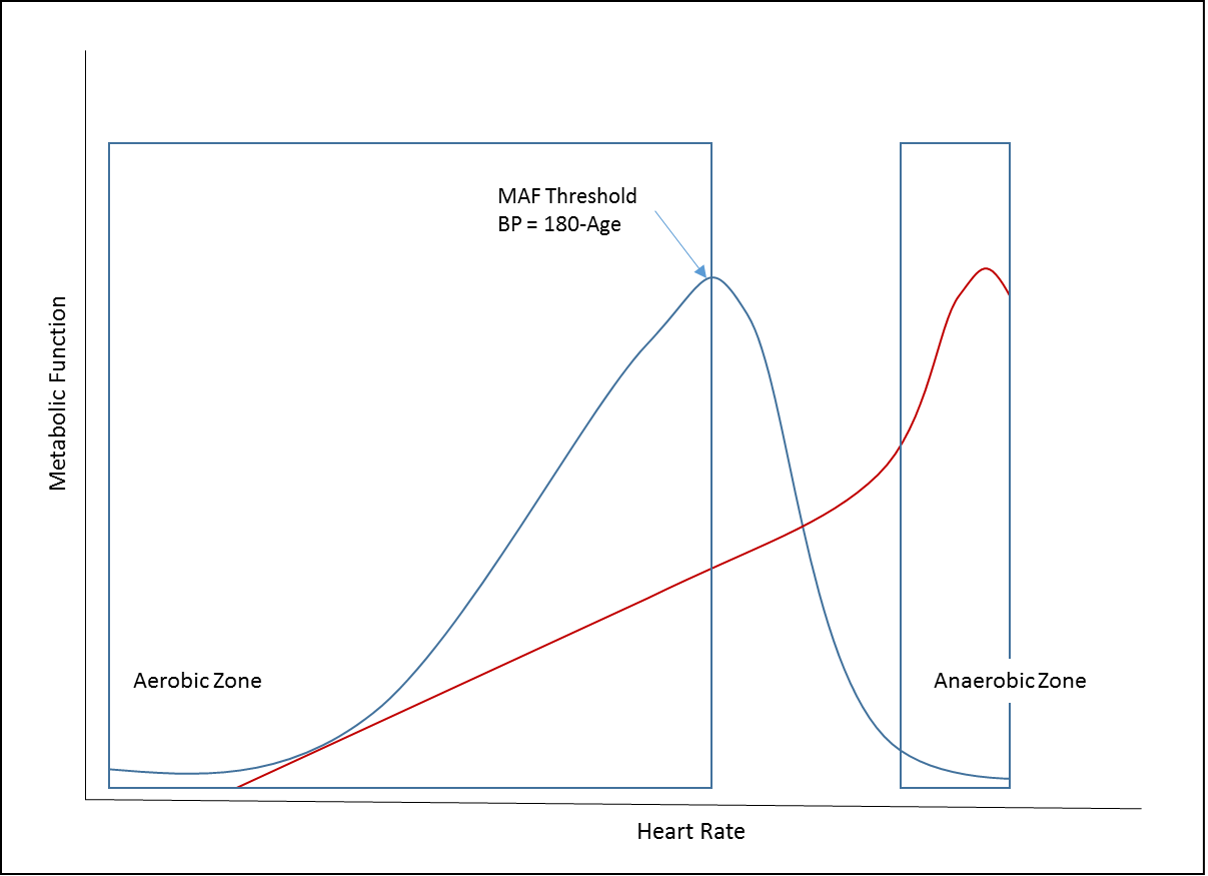The other night I was in a discussion with some friends about what my approach to training was, and how it might differ from what they were doing day-in and day-out. This got me thinking I needed to add some more information, inspiring this entry.
My approach to training is rooted in the Maximum Aerobic Function method developed by Dr. Phil Maffetone. I would describe this method starting with the chart below:
Let's walk through the it, blue line is your bodies' recruitment of aerobic system (blue line) and anaerobic system (red line) as a function of heart rate. Dr. Maffetone, based on his research, has shown that your Maximum Aerobic Function peaks at a heart rate equal to 180 minus your Age. This threshold value differs quite a bit from what the conventional wisdom considers aerobic. In fact the MAF heart-rate is considerably lower than other thresholds you find; this value puts you in the gray area where neither aerobic nor anaerobic system functions optimally. This causes overly stressful sessions that can lead to burn-out in the long run.
So based on this framework, this is what I do:
- 80-90% Aerobic - This is where is invest most of my time and effort. I go for long walks almost daily, practice tai chi daily. These activities fall well within the aerobic zone. I adapt the volume and intensity of my daily natural movement practice to fall within this zone. When I chose to go for a trail run or mountain bike ride, I do use a heart-rate monitor to ensure I don't fall outside the zone.
- 20-10% Anaerobic - Interspersed in my routine, I add true anaerobic sessions. This might be a High-Intensity Interval Training (HIIT) natural movement session or a set of sprints. These sessions are short, lasting less than 15 minutes and very difficult. I also take care to fully recover between these bouts of training. I don't adhere to a schedule, rather I do it when I intuitively feel rested and prepared to maximize the benefit
Does this approach intrigue you? Contact me to discuss how I can get you on this track to long-term vitality.





